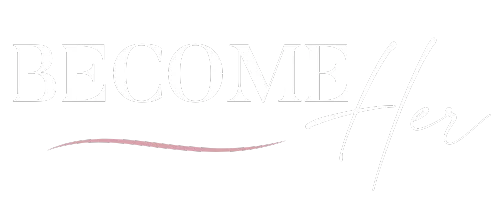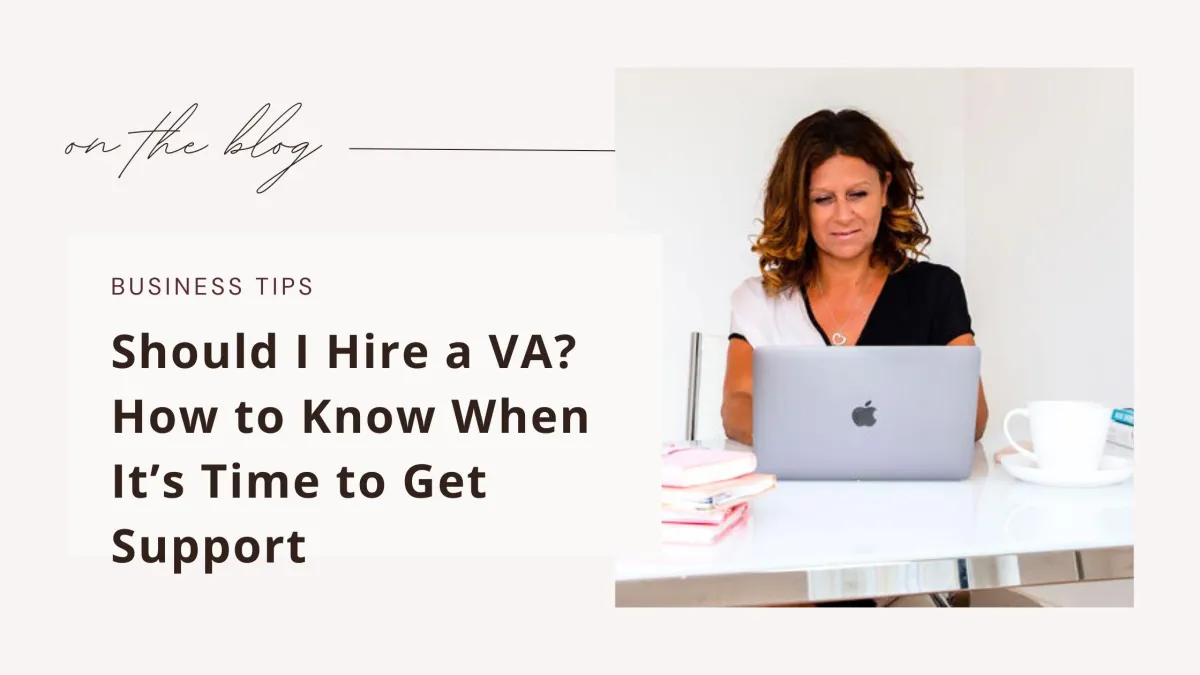Life Coaching for Smart Women at a Crossroads
About Suzy and her
Mission for you to

Business & Mindset Coach for
Creative Female Entrepreneurs
Helping you grow an incredible business by
growing the amazing women running it.

Welcome to Become HER Coaching
WHERE I SPECIALISE IN EMPOWERING CREATIVE
FEMALE BUSINESS OWNERS AND LEADERS
To embrace their individuality as a source of confidence and achieve the heights they dream of, without compromising or sacrificing their health, relationships and private lives.
ARE YOU READY TO BECOME HER? LET'S GET STARTED


I'm a passionate advocate for women's
empowerment, growth, self care and individuality.
With a blend of personal experiences, coaching strategies and methodologies, and powerful tools, I help women turn their visions into reality.
I find immense joy in sharing the invaluable lessons I've learned throughout my journey leading a successful exhibition design agency for more than 25 years.
My coaching style is a fusion of creativity, strategy, and unwavering support, using a combination of CBT, NLP and EFT modalities and I use a unique psychometric assessment for resilience & wellbeing at work (Wraw).
I believe that within each of us lies the strength to tackle life's challenges and that we don't need to "have it all"; we just deserve to have what we truly desire.
Are you ready to Become HER, an entrepreneur who embodies authenticity, innovation and impact?
BECOME HER
BECOME HER
When you work through my signature programme you embark on a life changing journey of transformation as we get laser focus on your Vision, Mindset, Strategy, Power, and Balance. Together, we tackle common challenges such as confidence, clarity, imposter syndrome, procrastination, decision-making, work/life balance, money mindset and the pursuit of growth and visibility. You will discover the three key invisible barriers to your success and how to break through them.
Become HER is a journey where you collect and collate all your wisdom, experience and knowledge, embrace your unique individuality and let it be the source of your confidence so you are unstoppable in your beliefs and what you can achieve.
When you work through my signature programme you embark on a life changing journey of transformation: Vision, Mindset, Strategy, Power, and Balance. Together, we tackle common challenges such as confidence, clarity, imposter syndrome, procrastination, decision-making, and the pursuit of growth and visibility. You will discover the three key invisible barriers to your success and how to break through them.
Become HER is a journey where you collect and collate all your wisdom, experience and knowledge, embrace your unique individuality and let it be the source of your confidence so you are unstoppable in your beliefs and what you can achieve.
MY MISSION
MY MISSION
To create a tribe—a community where women feel seen, heard, visible, and supported for their uniqueness, passions, and individuality. I'm dedicated to providing a space where women business owners can find a sense of belonging while stepping away from societal expectations and to use my gifts of experience, learning and belief to amplify the self-worth and net-worth of my clients.
To create a tribe, a community where women feel seen, heard, visible, and supported for their uniqueness, passions, and individuality. I'm dedicated to providing a space where women business owners can find a sense of belonging while stepping away from societal expectations and to use my gifts of experience, learning and belief to amplify the self-worth and net-worth of my clients.
BELIEVE | CREATE | BECOME
1:1 Coaching
Become HER Membership
VIP Mindset & Strategy Days
Group Programmes
Workshops
Retreats

The Smarter Way to Think About Your Business
Welcome to
My Blog Page
A collection of straight-talking pieces for women running real businesses.
Practical thinking. Useful perspective.
These articles come from the conversations that happen every week around pricing, clients, delivery models, time, and the role we play inside our own business.
If you are looking for a smarter way to run your business, you'll enoy these.

Should I Hire a VA? How to Know When It’s Time to Get Support
At some point, every business owner asks it:
“Should I hire a VA?”
Usually whispered somewhere between a full inbox and a late-night spreadsheet.
It’s the moment you realise you’ve built something real but you’re the one holding all the pieces.
Hiring a virtual assistant can feel like both a luxury and a lifeline.
The real question isn’t can you hire one it’s when and how.
The truth: a VA can’t fix chaos only structure can
Before you bring anyone in, you need systems.
Not perfect ones just enough clarity that someone else can step in and help.
If your inbox, client onboarding, or content calendar only live inside your head, a VA won’t save you time they’ll cost you more of it.
But once your processes are mapped (even roughly), support becomes a growth strategy, not a rescue mission.
Four signs you’re ready to hire a VA
1. You’re repeating admin tasks daily
If you find yourself doing the same 10–15 actions over and over, sending invoices, scheduling posts, answering standard enquiries you’ve already created a system. You’re just still the one running it.
That’s the point to delegate.
2. Your client experience is slipping
You know what excellence looks like, but you can’t maintain it consistently.
Things like delays in follow-ups, messy onboarding, or missed reminders signal that your capacity is maxed out.
A VA can help bring back the professionalism your brand deserves.
3. You’re avoiding strategic work
If you’re spending all your energy in the business and none on it, growth stalls.
A VA can buy you back time for the high-value work only you can do like refining your offers, developing new partnerships, or leading client strategy.
4. You’re mentally ready to let go (a little)
Delegation isn’t just a logistical decision it’s emotional.
If you’ve reached the point where you’re open to help and willing to be supported, that’s your readiness signal.
What to delegate first
Start small and structured.
Here’s what I often recommend to clients taking on their first VA:
Inbox management or diary scheduling
Client onboarding admin
Invoicing or payment reminders
Blog uploads, podcast scheduling, or newsletter formatting
Updating CRM notes or task lists
Choose the tasks that drain you most but don’t directly generate revenue.
How to avoid “VA regret”
The biggest mistake I see? Hiring before you’ve defined the role.
A clear task list and a few written workflows save weeks of confusion later.
If you don’t know what “done” looks like, your VA can’t either.
Create a short “Operations Snapshot”, a living document that explains:
Your mission and priorities
Tools and passwords (in a secure manager)
Weekly recurring tasks
Key deliverables
A good VA doesn’t need micromanaging they need context.
A real example
One of my clients, Lisa, was six years into her business and still doing everything herself — proposals, invoices, social posts, follow-ups.
She didn’t hire a VA because she was “too busy to train one.”
When we mapped her processes, we realised that onboarding alone took 8 hours a week.
A VA now handles 80% of that system. Lisa’s focus returned to her clients and her revenue rose by 30% in six months.
Structure made space. Support made it sustainable.
The takeaway
Hiring a VA isn’t a sign you’ve made it.
It’s a sign you’re building well.
The question isn’t “Should I hire a VA?”
It’s “Have I built enough structure that hiring one will move me forward?”
If the answer’s even partly yes, you’re closer than you think.
If you’re ready to bring calm, clarity, and support into your business, let’s talk.
→ Book a Turning Point Strategy Day or contact Suz to design the systems that make your next hire worth it.

Should I Hire a VA? How to Know When It’s Time to Get Support
At some point, every business owner asks it:
“Should I hire a VA?”
Usually whispered somewhere between a full inbox and a late-night spreadsheet.
It’s the moment you realise you’ve built something real but you’re the one holding all the pieces.
Hiring a virtual assistant can feel like both a luxury and a lifeline.
The real question isn’t can you hire one it’s when and how.
The truth: a VA can’t fix chaos only structure can
Before you bring anyone in, you need systems.
Not perfect ones just enough clarity that someone else can step in and help.
If your inbox, client onboarding, or content calendar only live inside your head, a VA won’t save you time they’ll cost you more of it.
But once your processes are mapped (even roughly), support becomes a growth strategy, not a rescue mission.
Four signs you’re ready to hire a VA
1. You’re repeating admin tasks daily
If you find yourself doing the same 10–15 actions over and over, sending invoices, scheduling posts, answering standard enquiries you’ve already created a system. You’re just still the one running it.
That’s the point to delegate.
2. Your client experience is slipping
You know what excellence looks like, but you can’t maintain it consistently.
Things like delays in follow-ups, messy onboarding, or missed reminders signal that your capacity is maxed out.
A VA can help bring back the professionalism your brand deserves.
3. You’re avoiding strategic work
If you’re spending all your energy in the business and none on it, growth stalls.
A VA can buy you back time for the high-value work only you can do like refining your offers, developing new partnerships, or leading client strategy.
4. You’re mentally ready to let go (a little)
Delegation isn’t just a logistical decision it’s emotional.
If you’ve reached the point where you’re open to help and willing to be supported, that’s your readiness signal.
What to delegate first
Start small and structured.
Here’s what I often recommend to clients taking on their first VA:
Inbox management or diary scheduling
Client onboarding admin
Invoicing or payment reminders
Blog uploads, podcast scheduling, or newsletter formatting
Updating CRM notes or task lists
Choose the tasks that drain you most but don’t directly generate revenue.
How to avoid “VA regret”
The biggest mistake I see? Hiring before you’ve defined the role.
A clear task list and a few written workflows save weeks of confusion later.
If you don’t know what “done” looks like, your VA can’t either.
Create a short “Operations Snapshot”, a living document that explains:
Your mission and priorities
Tools and passwords (in a secure manager)
Weekly recurring tasks
Key deliverables
A good VA doesn’t need micromanaging they need context.
A real example
One of my clients, Lisa, was six years into her business and still doing everything herself — proposals, invoices, social posts, follow-ups.
She didn’t hire a VA because she was “too busy to train one.”
When we mapped her processes, we realised that onboarding alone took 8 hours a week.
A VA now handles 80% of that system. Lisa’s focus returned to her clients and her revenue rose by 30% in six months.
Structure made space. Support made it sustainable.
The takeaway
Hiring a VA isn’t a sign you’ve made it.
It’s a sign you’re building well.
The question isn’t “Should I hire a VA?”
It’s “Have I built enough structure that hiring one will move me forward?”
If the answer’s even partly yes, you’re closer than you think.
If you’re ready to bring calm, clarity, and support into your business, let’s talk.
→ Book a Turning Point Strategy Day or contact Suz to design the systems that make your next hire worth it.

"Suzy is an intelligent woman who thrives on seeing others succeed. Her creativity and passion for others shines through. She has so much to offer women of all ages and her excitement at helping others succeed is contagious. She perfectly balances the role of coach and friend. Xx"
Carla Cortesi, Animal Assisted Therapist

LET'S WORK TOGETHER

Based in Henley, Oxfordshire.
Helping Women in Business Worldwide
NEWSLETTER SIGN UP
SIgn-up for free monthly insights and learnings about launching, growing and building your business.

